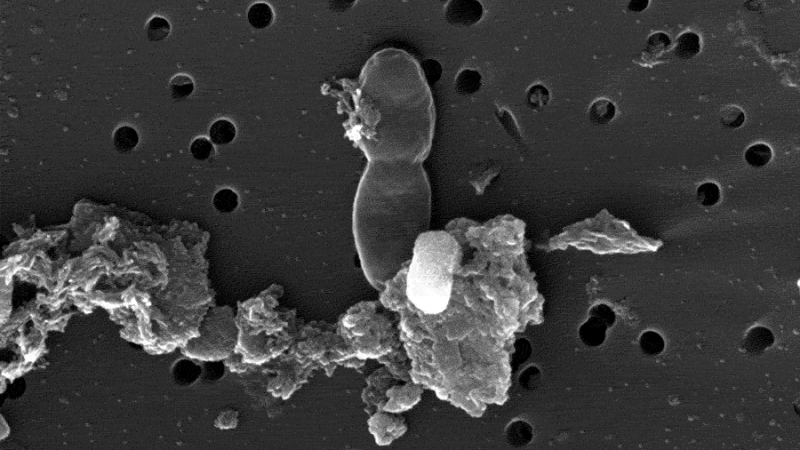December 17, 2019
by Andreea Sterea
The Harmony Gold mine in South Africa contains isolated pockets of salt and hot water. Scientists believe these “bubbles” in the South-African mine could contain perfectly preserved life forms 2 billion years old.
The South African Mine’s Ancient Life Findings
Devan Nisson, a graduate student from Princeton, presented some interesting findings and theories at an American Geophysical Union meeting a few days ago. In the past two years, her team has been collecting samples from the Harmony, a South African mine rich in gold and uranium.
The scientists discovered isolated pockets of salty and hot water. The perfectly isolated water pockets do not contain nutrients from the surface and might be similar in their chemical makeup with water on Mars.
However, the truly surprising part of this research is not the existence of the water pockets, but what the researchers found inside them. Upon examining the samples under an electronic microscope, the team discovered rod-shaped organisms (called archaea) that might be bacteria or microbes.
One of these organisms seemed to be in the middle of cellular division if the scientists interpreted correctly what they saw.
The South African mine’s pockets contain water that is seven times saltier than seawater. The water also reaches temperatures of 129 F, the threshold that life can tolerate. Nisson and her team consider that these pockets might contain life that is around 2 billion years old. However, until they run DNA tests, they will not know for sure.

What Hides In the South African Mine’s Water Pockets?
The studied material seems to contain ions (nitrate and sulfate). Some microbes can use such ions during their metabolic processes to generate energy. The rodlike shapes might be minerals. Moreover, the science team also discovered large quantities of small organic acids. They could supply the carbon required by life forms to build and keep cellular structures.
Therefore, to establish if the material contains life forms, further research is mandatory. Nisson and her colleagues aim to extract and sequence DNA from the water pockets.
The genetic data might reveal whether the organic material represents life forms that have been dwelling inside the mine for billions of years or more contemporary microbes/bacteria introduced into the chambers during mining and drilling activities.
Scientists hope to find answers to this South African mine dilemma soon. Nevertheless, the team can still draw some conclusions about life surviving in extreme conditions. Of course, such findings can shine light not only on life’s evolution on Earth, but give us a glimpse into understanding the likelihood of life surviving on the Red Planet.
According to the research team,
“These preliminary results suggest fluids, whose chemical composition has been long affected by water-rock interaction, do impose constraints strong enough to alter microbial composition and functionality within the subsurface, and may lend insight to habitability of the Martian subsurface.“
What Can We Expect Next from the South African Mine Research?
NASA and the National Science Foundation funded and supported the 2018 and 2019 research and sample collection from the Harmony Gold mine. The rodlike shapes give scientists hope that one day we might discover all the secrets of life’s evolution on Earth. In addition, the future DNA investigations might reveal important clues on the potential existence of alien life on Mars. Just as Devan Nisson said,
There is a potential that [the pockets] were isolated over that long time scale. So this would be a unique opportunity to see life, essentially, evolving in a bubble.
We hope to hear news on this research soon, as the concept of discovering 2-billion old year life forms in our day and age would give scientists a good run for their money.
Photo Courtesy of Tullis Onstott and the Princeton Institute for the Science and Technology of Materials Imaging & Analysis Center
Want more science now?
Check out our news page where we post interesting studies and discussions (sometimes mocking them mercilessly) for more.
